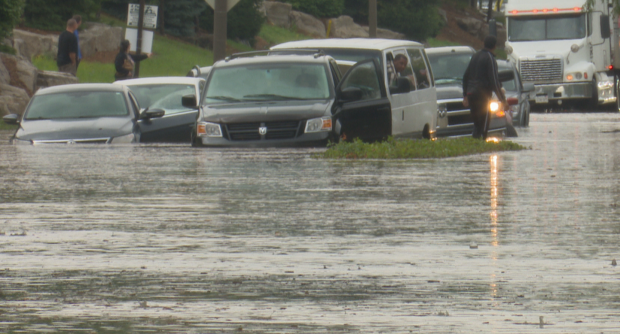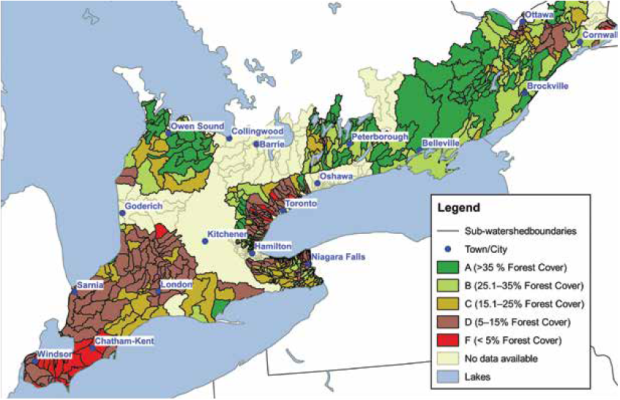Windsor a 'sitting duck' for flooding due to lack of trees, wetlands in Essex County
Disappearing forests and wetlands in Essex County means more flooding in the City of Windsor, says the Environmental Commissioner of Ontario.
An entire volume of Dianne Saxe's latest report, entitled "Back to Basics," is dedicated to disappearing forests and wetlands in southern Ontario.
"Essex County, which is upstream of you, has the lowest rate of wetlands and woodlands in Ontario — only 3 per cent of trees, and only about 1.5 per cent of wetlands," Saxe explained to CBC News. "The minimum necessary for a healthy ecosystem and some kind of reasonable flood resilience is 30 per cent woods and 10 per cent wetlands."

As a result, she says, rain gushes from the county into the city.
"Basically, you're an order of magnitude less woodlands and wetlands than you need to absorb the rain when it comes. So you're sitting ducks when it floods."
This increased amount of rainwater also contributes to the amount of raw sewage dumped into rivers and lakes as a result of overwhelmed city sewer systems, another issue highlighted in Saxe's report.
The environmental watchdog says these issues can be reduced or eliminated through a series of measures.
"Reestablishing woodlands and wetlands in Essex County would go a long way to absorb the water so it doesn't flood into the sewer," she said. "We also know that within the city itself, Windsor doesn't ... charge people for the storm water they allow to flood into the sewers."

Saxe gave the example of a parking lot as a type of land use that contribute to flooding and sewage discharge.
"Because they're just an open hard surface, the water just runs directly into the sewer," she said, noting that cities such as Kitchener and Mississauga incentivize property owners through fees to drain storm water into the soil.
Green infrastructure such as green roofs can also help, Saxe added.

